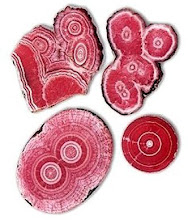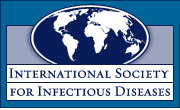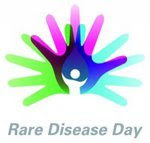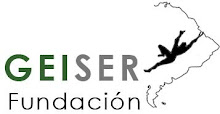New genetic culprits found in world-leading study of osteoarthritis
Major new study finds clues to the genetic causes of osteoarthritis
UK scientists have discovered more genetic regions associated with the cause of osteoarthritis. Researchers from nine institutions across the UK have described the findings as a significant breakthrough in understanding the genetic risk factors that cause the disease.
Publishing their findings in The Lancet today the Arthritis Research UK-funded arcOGEN consortium has highlighted eight genetic regions linked to the development of osteoarthritis. Previously only three osteoarthritis genetic regions had been identified.
Several of the genetic regions encompass genes that are known to regulate how joints are made and then maintained, making them excellent osteoarthritis candidate genes. Another genetic region contains a gene involved in the regulation of body weight, which is a strong risk factor for osteoarthritis.
The £2.2million project is the world's biggest ever-genome wide study into osteoarthritis, comparing the genetic differences of 7,400 patients with severe osteoarthritis with 11,000 healthy volunteers. The results were then replicated in over 7,000 OA individuals and 43,000 control individuals, from four European collaborating partners.
"About half of the risk of developing OA is down to genetic factors," explains Dr Ele Zeggini, first and senior co-author on the research from the Wellcome Trust Sanger Institute. "We brought the power of modern genetics to bear on this, one of the leading causes of impaired quality of life in the developed world.
"We discovered eight new regions that might contribute to OA, several of which might be involved in development, production or maintenance of healthy cartilage. They are a fascinating insight into the processes that could contribute to this disease. Importantly, our research helps us to pick apart this challenging family of diseases, opening a door that might lead to treatments targeted to specific types of OA."
Osteoarthritis affects around 40 per cent of people over the age of 70, a total of 8 million people in the UK, causing pain and disability. There is currently no cure for the condition. Treatments for early osteoarthritis are limited to non-surgical options such as pain killers and physiotherapy until joint replacement becomes a viable option. Osteoarthritis is a complex disorder with both environmental and genetic causes. It is estimated that about 50 per cent of an individual's risk of developing osteoarthritis is due to inherited genetic factors.
" We discovered eight new regions that might contribute to osteoarthritis and are a fascinating insight into the processes that could contribute to this disease. "
Dr Ele Zeggini
"In understanding causes of disease, we must first try to identify the genetic culprits that lead to increased risk of disease," says Dr Kalliope Panoutsopoulou, joint first author from the Wellcome Trust Sanger Institute. "After many years of research, only three genome regions had been implicated in Europeans.
"Our results are an important insight into the genetic architecture of osteoarthritis and may point to pathways in the cell that might be amenable to therapeutic intervention in the future."
Two of the novel regions are close to genes that immediately suggest clinical implications for osteoarthritis. One, CHST11, affects cartilage proteoglycan (proteins in the cartilage modified with sugar chemicals) and changes in proteoglycan are an active area of development of new treatments for osteoarthritis. A second gene, PTHLH, is the basis for recently developed parathyroid hormone-based treatments for osteoporosis. The research team suggests a next step would be to explore whether these compounds may also be effective in osteoarthritis.
Medical director of Arthritis Research UK Professor Alan Silman said: "There is no cure for osteoarthritis yet it affects millions of people around the world. For 60 years we have known that you are twice as likely to have osteoarthritis if your parents have the disease, yet we haven't known why.
"Until we understand the cause of this complex disease, we cannot hope to find a cure. This is a major breakthrough in our understanding of osteoarthritis which we hope will help us to unlock the genetic basis of the disease."
Further work is now needed to pinpoint the actual DNA changes within the genetic regions to establish exactly how these changes lead to osteoarthritis. In addition, the team emphasize that other genetic variants remain to be discovered and that far more genes are involved in susceptibility to osteoarthritis than was thought.
Principal investigator of arcOGEN John Loughlin, professor of musculoskeletal research at Newcastle University, said: "We are able to use our genetic discoveries to identify key biological pathways that can now be exploited to develop new treatments."
Notes to Editors
About osteoarthritis
Osteoarthritis is the most common form of arthritis, affecting around 40 per cent of people over the age of 70. It is a complex disease of the musculoskeletal system with both genetic and environmental risk factors. Osteoarthritis is characterised by cartilage degeneration in the joints that can cause pain, stiffness and swelling. It is one of the leading causes of chronic disability and impaired quality of life in the developed world.
Osteoarthritis represents a substantial public health burden in the UK and is the primary cause for total joint replacement (TJR) surgery (accounting for 80 per cent of TJR). Prevalence is increasing, in keeping with epidemiologically established risk factors in the population, i.e. age and obesity. Heritability studies in twins, sibling-pairs and families have estimated that genetic factors account for approximately 50 per cent of the risk of developing osteoarthritis in the hip or knee, although precise estimates vary depending on sex, affected site, and severity of disease.
Publication details
Identification of new susceptibility loci for osteoarthritis (arcOGEN): a genome-wide association study.
Lancet 2012
Funding
arcOGEN was funded by a special purpose grant from Arthritis Research UK (grant 18030). A full list of acknowledgements and funding sources are provided online by The Lancet.
Participating Centres
A full list of participating centres can be found in the paper.






















.png)











No hay comentarios:
Publicar un comentario